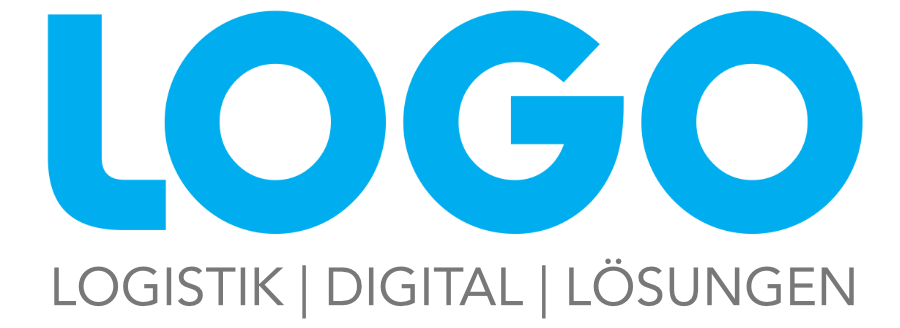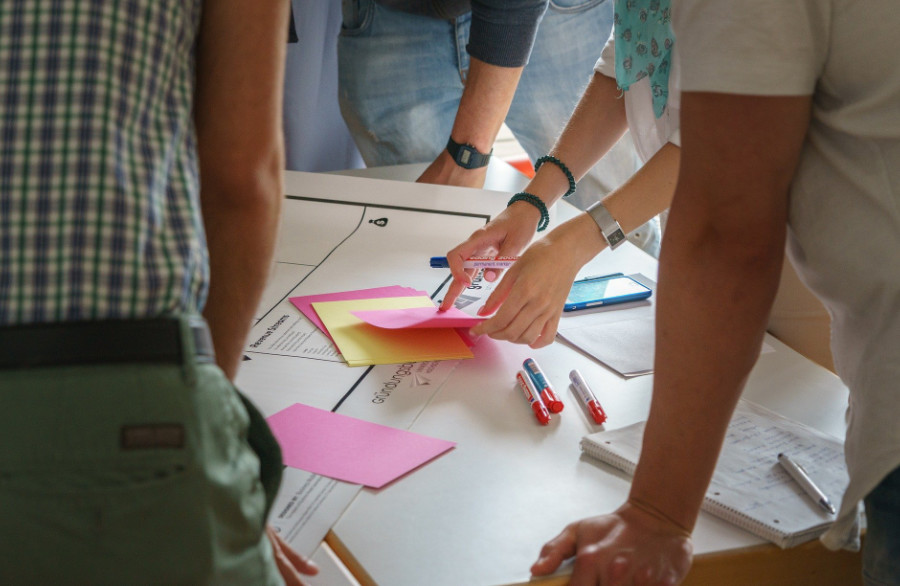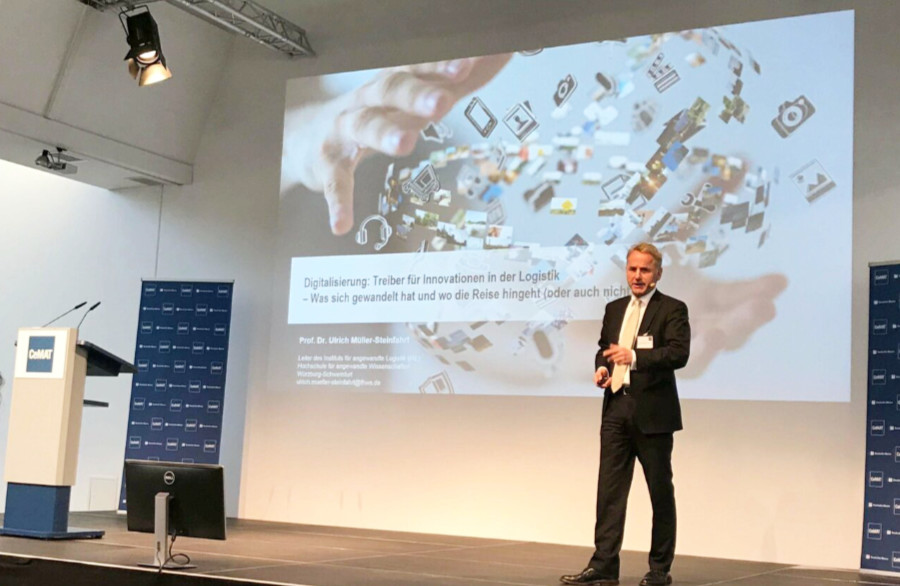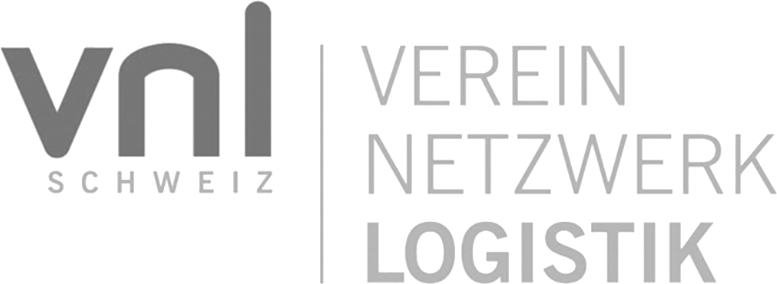Of course, I’ve often read about it as a buzzword, but now I’d like to do it myself in practice.
The facilitators introduce the method in a shortened form and divide the 50 or so participants into teams of two.
In just a few steps, they are supposed to use the design thinking method to analyse a clearly defined problem and find a solution. One of the basic ideas is not to tinker too long with a first prototype so that mistakes can be recognised quickly: “Fail Fast”. You go to the target group with the prototype and get feedback quickly.
This method is especially good for agile methods.
Identify and implement better customer functions
The topic for the workshop is self-service functions on the web.
Each participant should report a negative experience with a self-service function. The team partner is to ask him in detail and work out a solution and create a prototype in a few steps.
Not so easy, you think at the beginning. The whole workshop only takes 45 minutes.
But well guided with a few steps and above all repetitive questions “Why?” we actually reach the goal in the given time.
We identify what the customer’s self-service needs were, what their experience was and how the site should be built to give the customer the customer experience they want and fulfil their service request.
Improving the customer experience through better websites and self-service portals
My team partner’s problem was that he was looking on his insurance company’s website for a way to view all the insurance policies he had taken out and to get an overview.
However, the insurance company’s website only gave him incomprehensible policy names and did not provide any overview.
There was no contact form.
He was offered very extensive pdf files to download, in which he could not find the information he was looking for.
He was frustrated and gave up trying to get what he wanted on the website.
He then finally called his insurance agent and asked him to send him a policy summary.
The core problem I identified was that the website was not customer-centric, but company-centric.
I came across this problem after I had to keep answering the question Why after I had found an explanation. This is how you get closer and closer to the core of the problem.
The internal designations of the insurances are not transparent for the customer. Only the actions that the provider expects the customer to take in the web portal (contract renewal, conclusion of new insurance policies, etc.) were offered on the page.
The graphic and functional design of the website does not meet the customer’s requirements.
Advice through a live chat or a contact form is missing.
There are only FAQs that do not solve the customer problem.
Get to a prototype quickly with design thinking
In my prototype, I have sketched an insurance website that is simple and clear.
The customer can open a page called “My insurance”. This page contains icons for the different types of insurance taken out, each with a button next to it for more details.
There is a button “Download overview” and the possibility to get help via a live chat.
The detail pages for the individual insurance policies contain the most important data (type of insurance and term), further details can be viewed and downloaded here after one click.
All pages have little text and talking icons. Everywhere, the live chat starts as soon as the customer stays on the page for more than 1 minute.
In the workshop, each participant works on their solution for a few minutes and then presents it to their team partner. If the design thinking is successful, the prototype is a helpful solution for the user.
It is really fascinating how this method can be used to come up with an idea for improving a service problem and a proposal for the design and function on the website in such a short time.
In my daily work, I often have to implement customer wishes in websites. Masks have to be designed and workflows have to be integrated. The look should be clear, understandable and simple, the functions in the background often complex. But none of this should be visible on the surface. Often quite a balancing act.
I hope the method will also help me in the future to quickly find good solutions for our clients.












